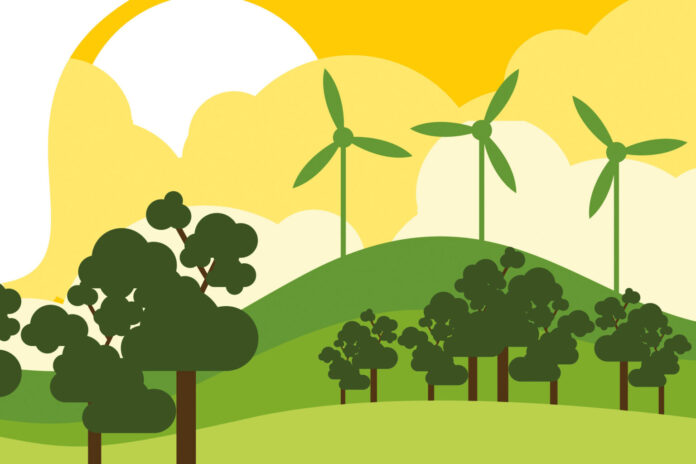
Q: I’ve heard there might be a shortage of phosphorous and this could really impact the environment, but I’m not sure I understand why. Can you explain this?
A: Phosphorus, along with nitrogen and potassium, is “one of the macro nutrients you need for plants to grow,” explains Dr Rosanna Kleemann, environmental engineer and research programme manager with the BioOrbic, Bioeconomy SFI Research Centre at UCD. It’s in our soil and our food and now used in technologies ranging from batteries to microchips. It’s also a finite resource that takes millennia to form.
“There is no substitute for phosphorous,” Kleemann says.
Naturally occurring in soil, phosphorous gets fixed in the food that grows in that soil, so, as you grow more food, the nutrients are taken out and the soil gets degraded, Kleemann explains. This is why you need fertiliser containing phosphorous. It was traditionally called “life’s bottleneck” because, without phosphorous, we can’t grow food. The shortage is a consequence of “having populations and people, and people need to eat,” she says, and as the population continues to increase, we have to grow more food.
On the ground, there is the need to strike a balance with phosphorous. Farmers have long been encouraged to measure soil nutrients, because too little will leave the soil barren but “if you add too much,” Kleemann notes, “it can leech into waterways which can cause eutrophication” – there will be less oxygen in the water causing algae to bloom and fish to die.
Unlike with nitrogen, which has a gaseous source and can be extracted from the air, phosphorous can only be found in sedimentary rock, Kleemann says. What’s being used in Ireland is imported primarily from a huge mine in Morocco. There is a “smallish mine in Finland, the only European source,” she adds, while China has a good source, but high export tariffs, and the U.S. uses all that it produces. “It’s kind of a geopolitical situation around extracting the phosphorous,” she notes, with prices fluctuating.
“Another issue is that whenever you’ve extracted phosphorous from mines, it’s associated with radioactive residual,” Kleemann adds, which needs to be stockpiled and buried. Mining also comes with a large carbon footprint, as “it’s very energy intensive to extract phosphorus,” and is connected with social injustices, as the indigenous populations are not given access to the resource, making the need for the mineral even more fraught.
RECOVERY
Phosphorous has a storied history, Kleemann explains, as it was first discovered in the 1600s by German alchemist, Henning Brandt in his studies of the “golden stream,” otherwise known as urine. Phosphorus was used to make match sticks but workers were inhaling the element, leading to “phossy jaw” or a soft jaw and loss of teeth. This led to the formation of the first trade unions to improve working conditions. Because phosphorous glows in the dark, it was also used in magic shows and today, it’s still found in Coca Cola and other foods and in products like flame retardants. It’s also found in our bones and DNA.
“With any diet, we ingest double the amount of phosphorous our bodies actually need,” explains Kleemann, the extra winding up in the wastewater network and accumulating there, making wastewater a great source for recovering phosphorous. It’s a strategy already in the works in Ireland.
As it increases its capacity, the Ringsend Wastewater Treatment Plant in Dublin, which takes in 40% of the country’s sewage, has installed a recovery facility for phosphorous which can then be used as fertiliser, in an even better form – it will be “slow release” fertiliser, explains Kleemann, so when it rains, it won’t dissolve instantly but will take a while to break down, avoiding some of the current problems with runoff.
Recovering phosphorous will also help the treatment works run better, she adds. All of this is more of a supplement than a solution, but “it would insulate us from very high phosphate prices,” says Kleemann.
For her part, Kleemann is optimistic about the kinds of technology that are being developed, from the larger-scale treatment facilities to more on-the-ground tactics.
“The problem has been recognised really before it’s become a problem,” she says, and the EU has placed phosphorous and lithium on its critical raw materials list. Some European companies are working on things like “source separation” – using mobile units at festivals where urine is taken directly and concentrated sources of phosphorous are extracted. “All of these options are being reviewed.”
PRESERVING WHAT WE HAVE
On an individual level, there are also steps you can take. “Make sure you’re not over-applying fertiliser,” Kleemann suggests, instead using it in a more targeted way. Composting is also wise, as the lost phosphates will go directly back into the soil – a true circular economy. For home-grown fertilisers high in phosphorus, “horse, pig and chicken manure are all really good sources,” says Kleemann, with chickens perhaps being the easiest to fertilise sections of the soil if they are in a moveable enclosure.
You can also look at getting low-phosphate laundry detergents and, “if you really want to reduce, you could eat less meat,” she adds, as a meat-based diet is much heavier in phosphates. From big tech solutions to smaller steps at home, science has made it possible to preserve this invaluable mineral.











